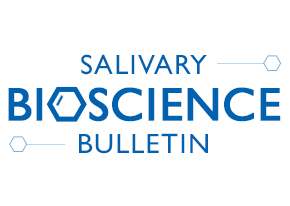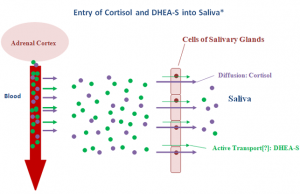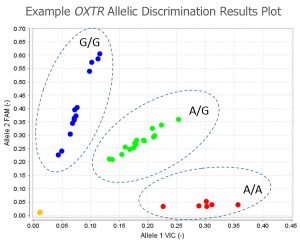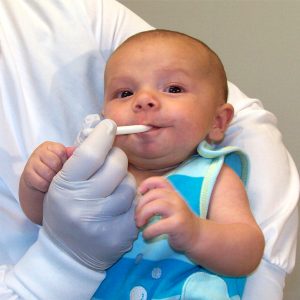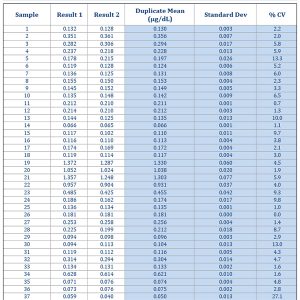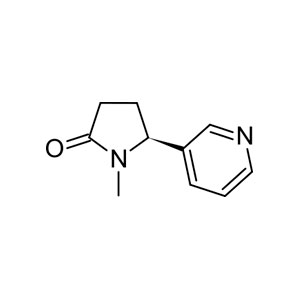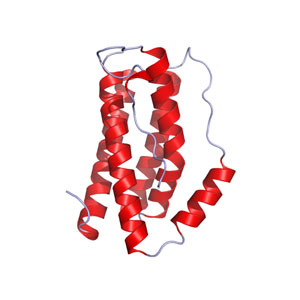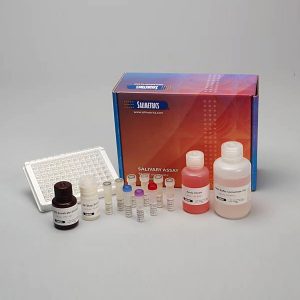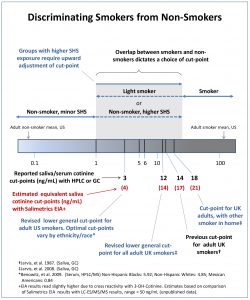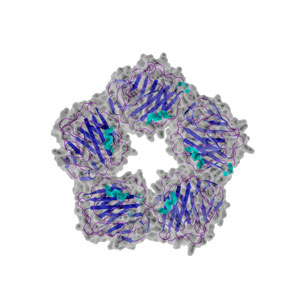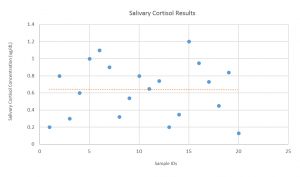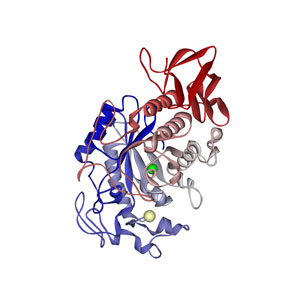SBB – Salivary Cortisol Research
Drop Date: March 2009 In This Drop: What Will You Discover Today? In recent weeks, cortisol and the effects of stress were on the cover of Newsweek, oral diagnostics was the focus of another major CNN news report, and hormones were the central topic of the Oprah Winfrey Show. In the U.S. experts are expounding [...]The Entry of Substances into Saliva and the Effect of Flow Rate on Their Concentrations
The major pathway into saliva for most steroid hormones and other small, neutral molecules is by passive diffusion. The salivary glands are surrounded by dense beds of capillaries, and many blood components pass easily through the capillary walls, bathing the saliva glands. The neutral steroids diffuse readily through the lipo-protein membranes of the secretory cells [...]SBB – First Issue
Drop Date: November 2008 In This Drop: Welcome to the First Issue of The Spit Report We are pleased that you have subscribed to our electronic newsletter, and we hope that you find it to be useful and informative. Naturally, we would like you to look over the news from our company to see the [...]Adolescent appraisal of interparental conflict is reflected by stress reactivity
Adolescent conflict appraisals moderate the link between marital conflict and physiological stress reactivity Author: Lucas-Thompson RG, et al. (2017), Journal of Research on Adolescence The goal of this study was to advance understanding of how adolescent conflict appraisals contribute uniquely, and in combination with interparental conflict behavior, to individual differences in adolescent physiological reactivity. Saliva […]
Collecting and Handling Saliva for DNA Analysis
DNA in Saliva The DNA in saliva originates from cells that are shed from the inner linings of the mouth and from white blood cells. These DNA-containing cells are collected, and the DNA is then extracted by various methods. SNP Genotyping From Saliva Samples Easy and accurate salivary DNA analysis enables the genotyping of well-characterized [...]Saliva Collection from Infants and Small Children for Research Studies
Studies have reported that some older preschoolers are able to donate saliva samples by spitting or drooling (1,2), but researchers have generally found that using some sort of absorbent device is the best way to collect saliva from young children. Parents often have a better chance of getting the child to accept the device into [...]Calculating Inter- and Intra-Assay Coefficients of Variability
In order to express the precision, or repeatability, of immunoassay test results, researchers in the social and behavioral sciences typically report two measures of the Coefficient of Variability (CV) in their publications: the Inter-Assay CV and the Intra-Assay CV. The CV is a dimensionless number defined as the standard deviation of a set of measurements [...]Using Salivary Cotinine Assay to Determine Smoking Status
One of the difficulties encountered in identifying smokers by self report is that there are many different ideas of what constitutes smoking behavior. For example, when asked about their smoking status, light or intermittent smokers will often classify themselves as nonsmokers. In order to maintain consistency in the use of various terms while gathering data [...]Collecting and Handling Saliva Samples for Cytokine Analysis
As was noted in the Spit Tip from our Bulletin devoted to salivary CRP (April 2011), limited information may exist on the best ways to collect and handle saliva for the analysis of many novel biomarkers. In the case of salivary cytokines such as IL-1ß, IL-6, and TNF-a, however, the modest amount of work that [...]Tips for Running Salimetrics Assays
To obtain consistent results, it is important to always use the same methods, equipment, timing, etc., when testing saliva samples. Salimetrics recommends that all saliva samples be frozen, thawed and centrifuged before use in our assays. (Freezing precipitates particulate matter and mucins.) Note: This process must be repeated every time a sample is refrozen, as [...]Guidelines for Interpreting Cotinine Levels: United States
The following guidelines are based largely on the work of Neal Benowitz, et.al. These numbers were derived from serum cotinine values as measured by HPLC/MS. Note that optimal cut‐points differ by race/ethnicity and sex. We encourage you to read the entire text of the 2009 article. (1) Race/Ethnicity Adult Cutoff Adolescent Cutoff Non‐Hispanic whites 5 [...]Collecting and Handling Saliva for Analysis of Novel Protein and Peptide Markers
Saliva contains numerous protein-degrading enzymes, and levels of these enzymes are elevated in individuals with periodontal disease. (Watanabe et al., 1981; Ingman et al., 1993; Uitto et al., 1990) It is thought that many of these enzymes originate from inflammatory cells or microbes present in the mouth, but proteases and peptidases have also been identified [...]Interpreting Differences in ELISA/EIA Results
Occasionally, differences in ELISA/EIA results are observed from what is expected. In most cases, these differences relate to one or more factors: kit storage conditions, faulty laboratory equipment, technician error, or other factors that are likely to be causing the poor performance. If kit users experience OD readings that seem to be abnormal, they should [...]Correcting Salivary Alpha-Amylase Activity for Flow Rate
Although a recent paper* has stated that salivary α-amylase (sAA) concentrations are not affected by saliva flow rates, Salimetrics is aware that this matter is currently being re-examined. Until the question of flow-rate dependency for sAA is definitively settled, Salimetrics is advising customers to record data on saliva flow rates (mL/min) whenever sAA activity is [...]Variation in salivary cortisol and alpha-amylase rhythms over 24 months
Long-term stability of diurnal salivary cortisol and alpha-amylase secretion patterns Author: Skoluda N, et al. (2017), Physiology & Behavio This study aimed to investigate long-term stability and variability of diurnal cortisol and alpha-amylase patterns. Diurnal cortisol and alpha-amylase secretion patterns were assessed on a single workday with three waves of measurement across a total time […]
 Contact: Salimetrics (USA)
Contact: Salimetrics (USA)
